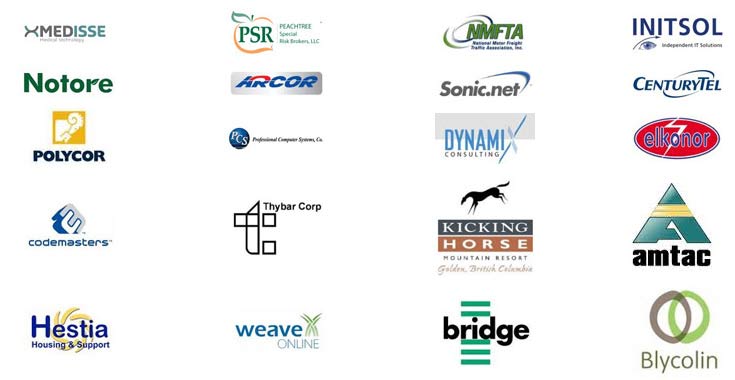Database Exporter for Outlook
Export metadata of emails, appointments, tasks or contacts to Database
Export the contents of an Outlook folder to an external Access or SQL Server database. Designed to overcome the inability of the Outlook’s built-in ‘Import and Export Wizard’ to handle data in custom forms, including custom fields.
Available for a fully functional 30 days trial.
Product Summary
- Seamless integration with Microsoft Outlook
- Export the contents of the Outlook folder to a relational database such as MS Access (MDB), Azure SQL, and all versions of SQL Server (including Express editions)
- Support pre-defined Outlook fields as well as custom fields defined for that folder
- Choose any customized form defined for that Outlook folder
- Supports POP, IMAP, Exchange mailbox and Public folders
- Export all kind of Outlook items – mails, posts, appointments, tasks, journals or contacts
- Optionally include items from the subfolders in the export, either to a single table or to separate table for each subfolder
- Supports export of notes (Plain Body or HTML Body of the Outlook item, including task, appointment and contact item).
- Real-time monitoring of incoming emails/new items of an Outlook folder to automatically export to database
- Special MSI installer available for enterprise wide deployment (upon request)
- Support for Office 2010, 2013, 2016, 2019, 2022, 365.
- Support export to Microsoft Access and Microsoft SQL Server and cloud based Azure SQL

THE PROBLEM
Limitation in 'Import and Export wizard'
You have already customized an Outlook form with your own fields. At some point of time, you’re going to want to put data into it or get that data out. But it might come as a big surprise that you cannot use Outlook’s built-in Import and Export wizard to export data from custom forms. User-defined custom fields are absent on the data mapping grid in the export wizard.
Even worse, you might not get any built-in Outlook fields data at all, if you try to export from items that were created with custom forms. So, you are forced to write codes to handle all import/export chores involving custom forms yourself. What worst is that what you wrote works only for that particular Outlook form that you customized.
What if you have many customized forms?

THE SOLUTION
Database Exporter add-in for Outlook
Database Exporter add-in for Microsoft Outlook is designed to overcome this limitation (i.e., the inability of the Outlook’s built-in ‘Import and Export Wizard’ to handle data in custom forms), by allowing you to export any kind of data, including custom fields, to a database, in a simple click, or even better, on the fly with no intervention from the user.

How It Works
Learn the ways of exporting metadata of emails and other data to a database
With Database Exporter, there are 3 ways of exporting Outlook data to an external database, namely:
- Exporting items of an Outlook folder to a database
- Exporting Items including those in subfolders to a database
- Automatic live export of incoming emails or newly added appointments/tasks to a database
To export the contents of an Outlook folder, click the ‘Export to DB’ button as shown below. You will be shown with the ‘Select Fields’ dialog, with which you can opt which form to be used for displaying the available fields.

By default, the first option ‘Retrieve from the first item’ is selected, and what it does is, to probe the first item of the folder and automatically seek out all the available fields, including any number of user defined custom fields. It is recommended that you stick with this option of displaying the fields, unless, you want to retrieve Outlook specific fields only (second option), or want to use a particular custom form out of many defined for that Outlook folder (third option).

By default, when you export the contents of an Outlook folder using the ‘Export to DB’ button, only the items of the current folder is taken into account. Items inside the subfolders (if any) are excluded from the export. Below are a few export options available.

![]() When exporting to database, include all items from subfolders – When you choose to export the contents of an Outlook folder, enable this option to include items in subfolders of any number of levels.
When exporting to database, include all items from subfolders – When you choose to export the contents of an Outlook folder, enable this option to include items in subfolders of any number of levels.
For example, below, the current folder is ‘My Company’. When exporting this to database, if you had checked this option, the contents of the subfolders such as ‘Bookings’, ‘Cases’, ‘Ongoing’, ‘Customers’ etc, will also be exported to the same database.
![]() Export all data from all subfolders to a single table – Export all the items in the current folder, as well as those in subfolders in the same/single table, using this option. With this, the fields that you had chosen for the current folder will be applied to all the items in the subfolders as well.
Export all data from all subfolders to a single table – Export all the items in the current folder, as well as those in subfolders in the same/single table, using this option. With this, the fields that you had chosen for the current folder will be applied to all the items in the subfolders as well.
 Export data of each subfolder to separate table in same database – Another option is to export items in each of the subfolder to a separate table. This gives more flexibility in configuring the field options of the subfolders to be exported. For example, you can set the same chosen fields as that of the root folder, or use the default form for that subfolder, or even better, probe the first item of the subfolder to seek out the available fields. The latter option comes handy if you have user defined fields available on the folder or the item level.
Export data of each subfolder to separate table in same database – Another option is to export items in each of the subfolder to a separate table. This gives more flexibility in configuring the field options of the subfolders to be exported. For example, you can set the same chosen fields as that of the root folder, or use the default form for that subfolder, or even better, probe the first item of the subfolder to seek out the available fields. The latter option comes handy if you have user defined fields available on the folder or the item level.

Database Exporter supports real-time monitoring of any number of Outlook folders (can be a public folder or shared mailbox folder too). This will automatically process incoming mails or newly added appointments, tasks or contact items and add the data for the chosen fields to the database, without any intervention from the user. This automation would be particular useful, if you want to maintain a parallel copy or backup of your current Outlook items.

Automatic export works by allowing Database Exporter to monitor selected Outlook folders (can be a shared or a public folder too), such that, when new emails are received or new appointments or tasks are added, Database Exporter automatically processes those items in real time and extract relevant data and add them to a pre-configured database. Each folder would have exactly one database each.
Automatically update DB record when Outlook item is updated/changed – If you enable this option, whenever an existing Outlook item on a monitored folder is edited and saved, instantly the changes will also be reflected in the corresponding record in the database. This feature enables you to maintain synchronization between the Outlook items and the records in the database, on the fly, with no manual work.
Removing database record on item deletion from Outlook
If the Outlook folder is monitored for auto export, a delete button appears in the Database Exporter toolbar that enables you to delete the unnecessary Outlook items and at the same time, remove the corresponding database records automatically.

Automatic live export enables you to maintain a parallel copy of the Outlook data and keeps the database in synchronization with that particular Outlook folder. This spares you from having to do that laborious work of copying and pasting the data from Outlook to database manually.

















